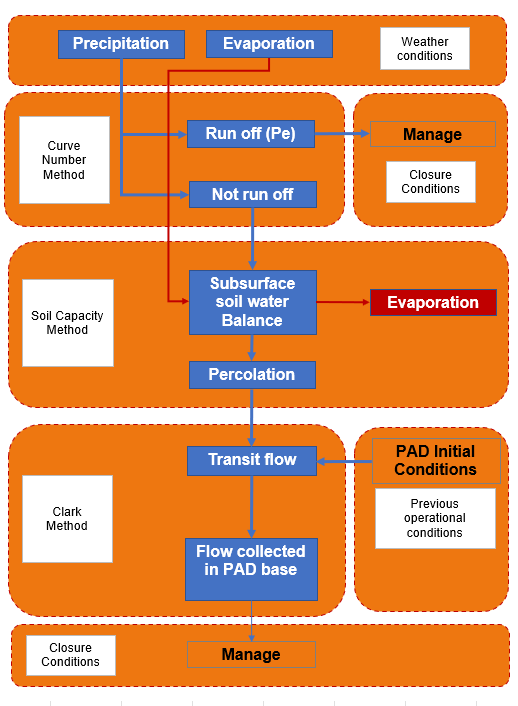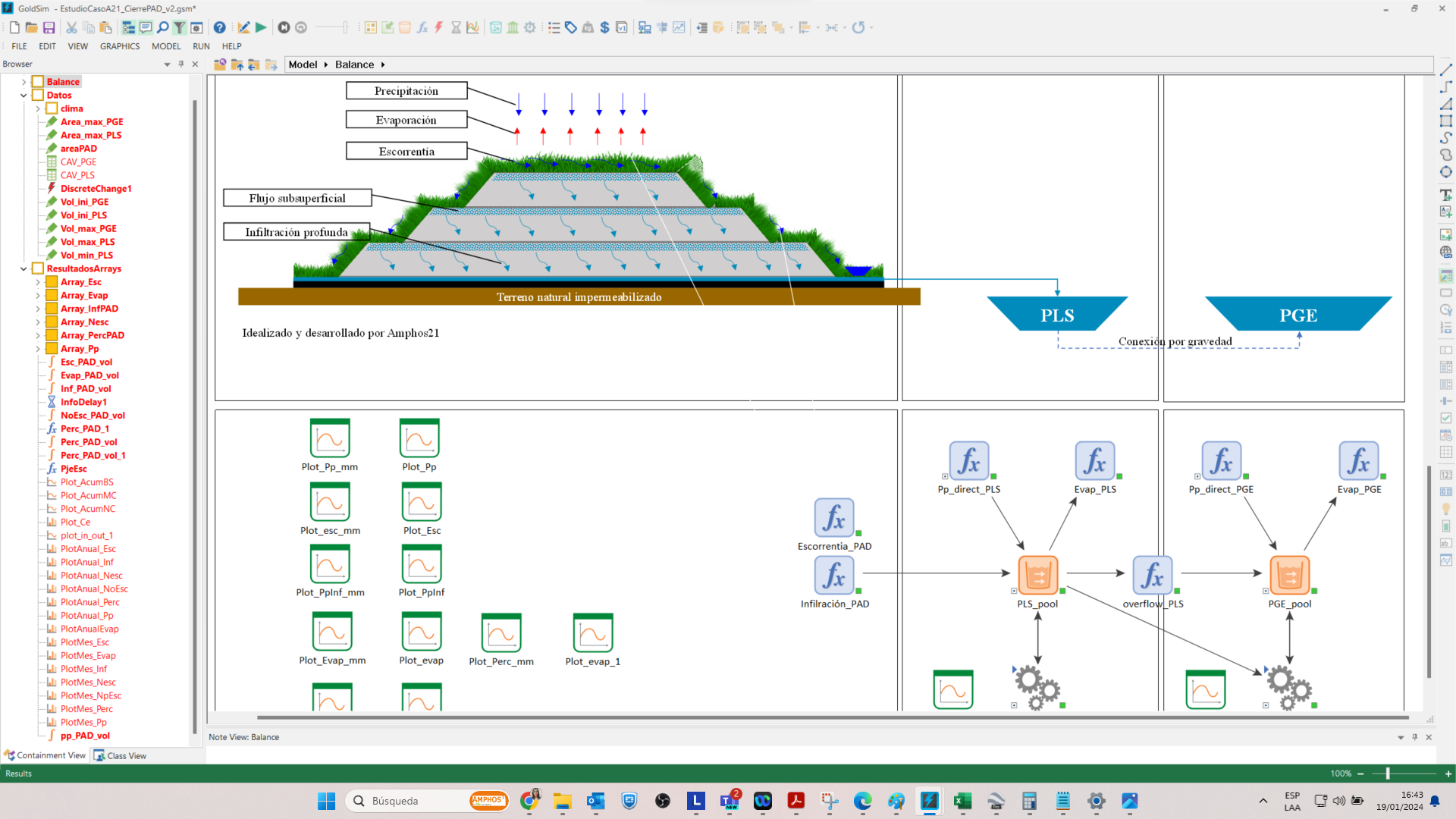Simulation of Leachate Flow at Heap Leach Facility

Amphos 21 developed a water balance model in GoldSim to simulate a Heap Leach, with the aim of quantifying the leachate flow after cessation of operations and subsequent closure and revegetation of the facility. This model was implemented at a mining unit in Peru, with an annual gold production of 70 thousand ounces, located at an approximate altitude of 4445 meters above sea level. The site conditions are characterized by a dry climate, with a total annual precipitation of 185 mm and an average annual evaporation of 1814 mm. As shown in the figure below, the modeled processes included precipitation, runoff, subsurface infiltration, and deep flow transit over the heap.

Effective precipitation was determined using the Curve Number method, allowing for the estimation of flow that runs off the heap and that which infiltrates the first layer of the heap soil. Infiltrated flow was assessed using the soil capacity method, considering variables such as field capacity, wilting point, and soil thickness. This method determined the amount of water retained in the first soil layer (30 cm) and how much water would percolate to subsequent levels. In this balancing process, losses are associated with evaporation and moisture retention due to soil capacity. The excess percolated water underwent flow transit using the Clark unit hydrograph method to represent the time lag between input and output flows from the heap associated with a delay coefficient. The initial conditions of this methodology were linked to the amount of final irrigation flow over the heap (prior to closure) and the geotechnical characteristics of permeability.
The model contributed to environmentally sustainable management of mining operations at the site.

